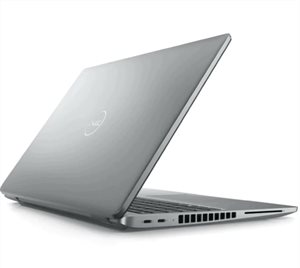
USB-C charging on the iPhone may solve the world's problems. Source: Lindsey Schutters
The biggest advantage of USB-C connectivity (outside of not needing more than one try to plug it in) is access to the power delivery (PD) standard which, in theory, should allow users the flexibility to charge any USB-C device with any PD charger and cable. In practice we’re in PD 3.1 already that adds 28V, 36V and 48V on top of the existing 5, 9, 15 and 20 of the previous standards.
“The 3.1 revision to the USB Power Delivery specification, which includes the capability to provide up to 48V and 240W of power, will help enable additional design opportunities for current and new users of USB Type-C technology,” said Deric Waters, senior member of technical staff at Texas Instruments in a media statement announcing PD 3.1.
The world still has many sub-20W charging adapters out in the wild as well as a confusing mix of proprietary technologies that use different pin configurations inside the USB-C connector to enable different charging functions.
The promised land
The promise of USB-C is that you only need one cable and one adapter to charge all your devices, much like the standard USB-A (the rectangle one) connector before it, the devil is in the detail. Where USB 3.0 (aka SuperSpeed) was characterised by the blue accent colour on the port and connector, it’s much more costly to colour code the tiny type-C.
Apple navigated this problem on its Lightning connector through the Made For iPhone (MFi) programme. For $99 per item, per year, accessory manufacturers could build devices to be compatible with the Lightning standard and print the MFi branding on the packaging which gives consumers a quick visual reference.
We’ll find out with the iPhone 15 launch whether there’ll be an MFi programme for USB-C, but Apple hasn’t introduced it on the iPad line – which is now all on type-C – and third party accessory makers will be less incentivised to make custom versions of existing inventory that has served the Android market where premium devices have been on USB-C for years at this point.
But the iPhone and its miniscule wattage requirements is not the real issue that will plague IT departments, but rather the user expectations and confusion surrounding the type-C ports on their existing devices, like business issue laptops.
Corporate workhorses need taming
Corporate fleet workhorses like the ever-popular Dell Latitude and Vostro laptops are slowly making the transition to USB-C for charging, but many devices out in the wild have both a type-C port and the 12V DC barrel plug charging options.
From personal experience the power requirements of the generation 11 and 12 Intel Core-i CPUs demand upwards of 45W to recharge while plugged in. In Apple’s own ecosystem this isn’t that much of a problem because the equivalently priced MacBook Air and 13-inch MacBook Pro running Apple’s M-series CPUs will happily accept power from a 25W power bank.
Only the latest 13-gen Intel-powered Evo MacBook fighters (Evo is the Intel branding for a set of standards that premium thin and light Windows laptops running i7 and i5 CPUs must conform to) offer similar charging flexibility.
In personal experience it was only Xiaomi’s excellent, but sometimes hard to come by, 100W car charger that had enough juice (PD 3.1) to power up a Dell Latitude from a standard lighter socket. Samsung’s 25W battery pack only conforms to PD 3.0 but can reliably power a Huawei Matebook X Pro (a 13th-gen Intel Evo).
Saving the planet
The argument for USB-C is for environmental concerns, but the sheer number of outdated charging adapters and cable that are incompatible with the latest technology and charging demands is an e-waste problem that is still left unaddressed.
Small and light gallium nitride (GaN) chargers that can push the required wattage are still expensive and the two portable solutions mentioned earlier are both close to R1,000 purchases that consumers will be reluctant to make in the current economy.
With a total addressable market of one billion users, the iPhone has the potential to bring order to a fragmented USB-C market and finally deliver on the promise of one cable and one charger to rule them all.









































